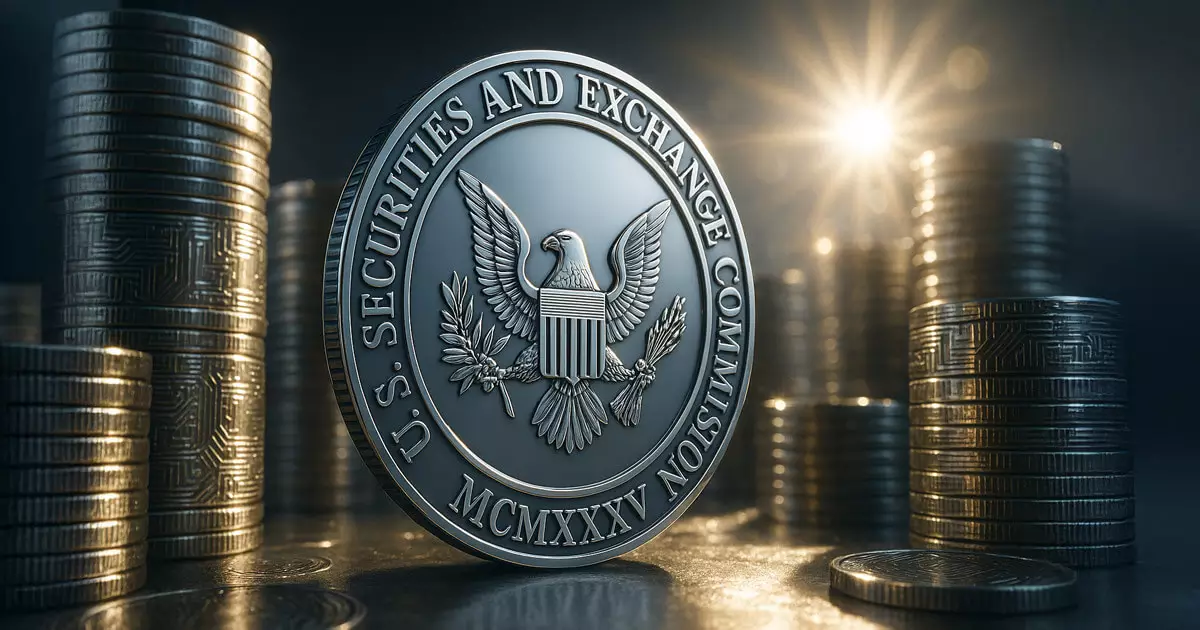The recent announcement by the U.S. Securities and Exchange Commission (SEC) that establishes certain forms of crypto staking as free from securities law registration comes as a double-edged sword. This clarification, issued by the SEC’s Division of Corporation Finance, suggests that various staking activities, ranging from self-staking to delegated and custodial methods, are exempt from financial regulatory burdens. While one could view this development as a much-needed breath of fresh air for crypto enthusiasts and innovators, it raises critical questions about the SEC’s commitment to a consistent regulatory framework—a concern that grows louder with every regulatory decision they make.
To some, this move could signal a tipping point toward a more accommodating regulatory environment, sparking enthusiasm among investors and market participants who have felt alienated under the stringent oversight pursued by the previous SEC administration. However, the skepticism infused in various corners suggests that the agency has at times demonstrated an inadequate understanding of the unique mechanics of decentralized finance. In a constantly evolving space where technology outpaces legislation, this patchwork guidance feels like a mere salve rather than a comprehensive strategy for a cohesive regulatory stance.
Hester Peirce: A Voice of Clarity Amid Regulatory Ambiguity
One of the most refreshing comments comes from SEC Commissioner Hester Peirce, who has religiously advocated for a clearer regulatory approach toward cryptocurrencies. Peirce’s support of staking and her remarks about its pivotal role in securing blockchain networks underline a nuanced understanding of the stakes involved—not only for those directly participating in these networks but also for the broader implications on the innovation ecosystem in the U.S. As technology platforms and financial systems continuously interweave, regulatory apprehensions could pose a risk to America’s competitive edge in fintech and blockchain advancements.
Her point that the existing regulatory environment has pushed American users away from engaging in vital crypto participation reflects a broader concern: that an overly cautious regulatory framework may stifle growth and innovation. The SEC’s recent statement could remove the chill on potential investors who until now have remained in the shadows due to confusion and legal ambiguity.
Yet, while it is productive for the SEC to acknowledge the essential role staking plays, it’s imperative that nuanced regulations do not succumb to the whims of political tides. The concern remains: can we trust regulators to create a fair, transparent, and independent channel for innovation, or is this adjustment merely a temporary fix to appease the growing community of crypto advocates?
Discontent Within the Ranks: Internal SEC Division Woes
Amid the optimistic outlook suggested by some, it is critical to note the dissent within the Commission itself. Commissioner Caroline Crenshaw’s vocal critique highlights the internal ideological struggles that seem to be brewing within the SEC. By challenging the interpretation of the guidance—simply suggesting a veering away from the established Howey Test—she exposes an alarming inconsistency in the SEC’s approach to cryptocurrencies. Her remarks about an ongoing “fake it ‘til we make it” mentality echo a sentiment many share: how reliable can regulators genuinely be when they seem willing to sidestep legal foundations to usher in an era of regulatory adaptation?
The friction within the SEC only amplifies the urgency for a coherent framework that would protect consumers while encouraging innovation. Could this lack of unity hinder the advancement of products, such as Ethereum exchange-traded funds (ETFs)? As the climate for investor interest heats up, clarity and cohesion among regulatory bodies are paramount for sustainable market growth.
Opportunity or Pitfall? The Future of Staking and ETFs
With the SEC’s clarification potentially unblocking the path for the integration of staking in Ethereum ETFs, one must ponder the broader ramifications. The attractiveness of these investment vehicles could drastically shift with the addition of staking mechanics. However, as is often the case with legislative changes, “opportunity” may come hand-in-hand with unexpected pitfalls. Stakeholders must be wary: what good is innovation if it is mired in regulatory traps and convoluted tax implications?
Crypto and traditional finance are like magnetically opposite forces, attracting and repelling as they try to coexist. If the IRS does not swiftly follow suit with rigorous guidelines about the treatment of staking rewards, the ambitious potential of integrating staking into ETFs may lead to unforeseen complications. Meanwhile, the influx of capital into Ethereum ETFs—a staggering $480 million over just nine days—serves as a glaring reminder of the immense appetite for regulated crypto products.
The SEC’s latest developments regarding crypto staking propulsion bring forth both excitement and trepidation—an intriguing paradox that may define the next chapter in the evolution of finance.

